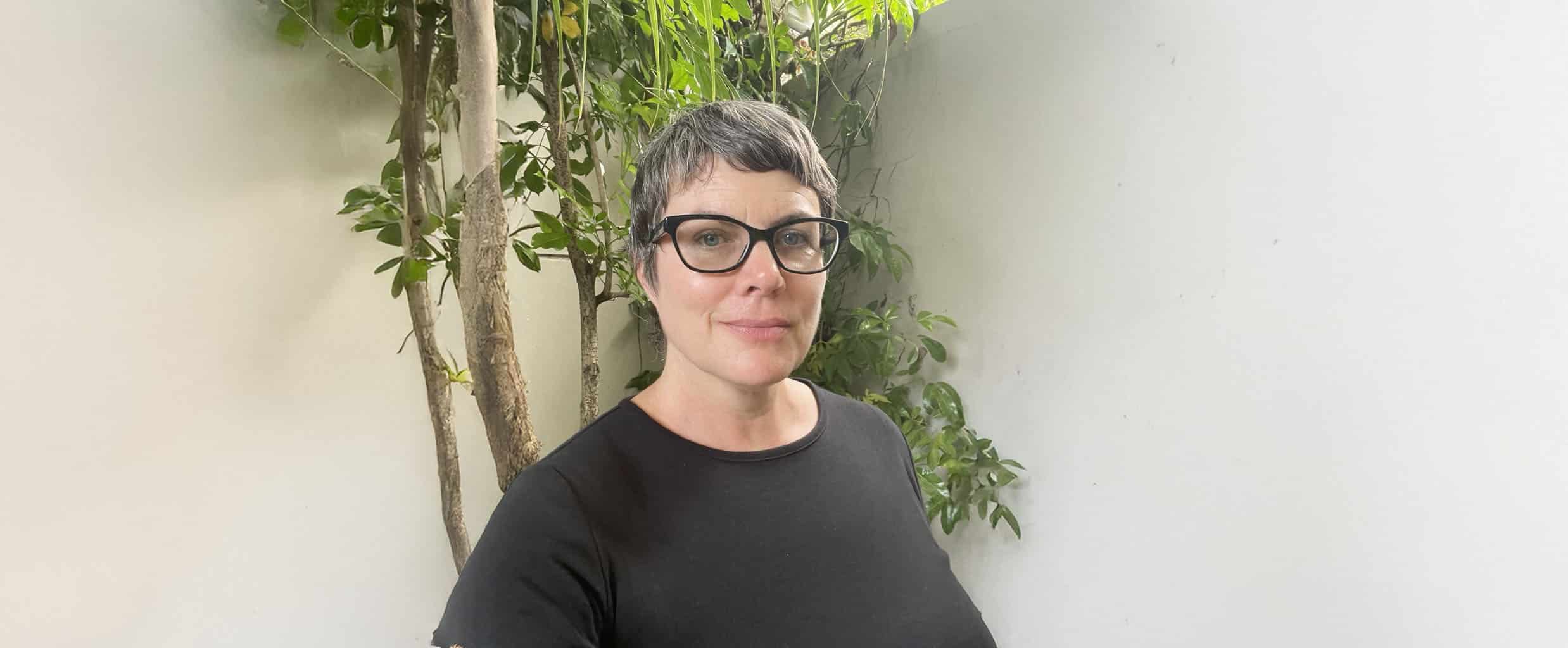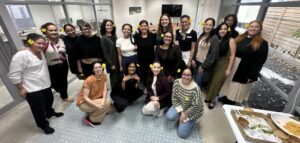
Questions For A Designer: Sadie Winslow
Questions For A Designer: Sadie Winslow
From discovering architecture by chance to designing with intention.
The following conversation has been edited for length and comprehension.
Can you share a brief overview of your journey into the field of architecture?
In a way, I think it was almost a lucky chance that I ended up in architecture because it wasn’t 100% well thought out at the beginning. When I was in high school, I belonged to a program for low-income families that paid for six college applications. Out of the six applications, only one of them was for an architecture school. The architecture school happened to give the best financial aid offer and ended up being what I studied!
I was really fascinated when I was in high school with things like– Earthship houses, sustainable and green architecture– but I really didn’t know what I was getting into. Luckily it turned out to be a great fit for me.
Are you from Puerto Rico originally?
No, I’m not from Puerto Rico, I grew up between New Hampshire and Louisiana, but I’ve been living here since I graduated from architecture school. I moved here with my partner immediately following graduation and was here for a year, then we went to New York for about 3 years, and I ended up doing the one-year Master of Architecture program at Colombia. Then we came back to Puerto Rico, and I have been here ever since. So, I’ve been here for over 20 years now– almost the entirety of my adult life.



Panorama views of New Hampshire, Louisiana and Puerto Rico // Photos Courtesy of Sadie Winslow
How did you end up at Marvel? What was it like when you first started in comparison to now?
I guess we could also say maybe it was a lucky chance– it was kind of the right place at the right time. Following Hurricane Maria I was looking for work, and I ended up getting hired here and started immediately on the El Portal de El Yunque Visitor Center project– which renovated the facility and put it back in public use following the hurricanes. So again, things just kind of aligned.
I think I’ve grown professionally since I first started. I think Marvel, of all the places I’ve worked, is a place that pushes you to grow professionally. I entered as a senior designer, and I was 100% focused on El Portal de El Yunque. I’ve since shifted into the role of an associate and have my hands in a lot of different projects all at once— everything from design proposals to construction administration. So, in that sense, I think there’s been professional growth on my part and a bit of a change in my expected responsibilities.
How is it working on proposals versus projects? Do you prefer one to the other?
I love being immersed in a project. However, the proposals can be interesting. Proposals, to me, are all about you putting in the effort to get the right projects into the office so that you can experience the joy of actually doing them.
For example, we’re working with a Cultural Center proposal right now with Acción Valerosa, which I think has the potential to be such a great project, plus it’s such a great client. So that motivates you to do everything you can to craft a successful proposal—because you want to be able to actually do the project.
Before you have the project all you can do is dream about it. But once you have it, you’re really trying to make all those dreams into reality, for yourself and the client!
Are there any sectors that you prefer to work in?
I love projects that are sustainable and community focused. When we get those [projects], that’s the most exciting. I like when we can marry social interests and things that are ecologically responsible– when projects can boost ordinary people. I love high design and design excellence, but I want it to be for everybody. When you get the chance to “design everywhere for everyone”, as Marvel says, that’s exciting to me.

Revitalization of el Portal de El Yunque // Photos Courtesy of Raquel Perez-Puig
How does design differ when you’re designing, let’s say, luxury homes versus designing for everybody?
One difference can be budget– some projects challenge you to do something fantastic with less of a budget or with more regulatory restrictions in place. It’s easier in some ways to do high-end, but you also feel like it’s not as rewarding sometimes. Not that it’s not rewarding. It’s just a different thing. It’s like a Faberge egg and a great omelet. They both have their place, both eggs, but they are two different things. You wouldn’t want to see the world without Faberge eggs, but you wouldn’t want to see the world without omelets either. The challenge for us architects is to make the Faberge eggs sustainable and the omelet a work of art.
As you know, we have 5 disciplines at Marvel: Architecture, Landscape Architecture, Interior Design, Urban Design and Planning. What do you enjoy most about working in this type of multidisciplinary environment?
One of the reasons I think architecture was such a great fit for me is because I’m intensely curious, and as an architect you play the role [of] conductor; you know a little bit about what everybody on the project team does, and you make sure that everybody’s doing their best in their proper role for the project. When everybody is at their best and organized into a cohesive “symphony” it comes together into a great project. While you work to achieve that, as a bonus, you get to learn from everybody. You might not be the expert in Art Deco plaster ornamentation, but you get to talk to the expert in Art Deco plaster ornamentation— you’re constantly learning. And similarly at Marvel– I may not be the expert in rain gardens, but I get to talk to people who are the experts in rain gardens and work with them, and co-design with them. It’s beneficial because you’re constantly learning and interested in what’s happening around you and it’s just a great opportunity to learn constantly from all these great people.
Thinking outside of work a little– Are there any hobbies or interests that consume your personal life? Do any of those affect your approach to design?
Not a hobby, but the fact that I’m a mother is a big part of my life, and it definitely affects my practice. I sometimes think back on this conversation I had during a design competition for low-income housing– there was a discussion about a communal laundry facility. It wasn’t a laundromat, it was on site, but still– I remember thinking, man, when your kid vomits in their bed at 3:00 in the morning, you just want to toss the blankets straight into the washing machine. At that moment, you want a washer and dryer in your unit. Everybody deserves that, you know? That’s just one example, but in lots of ways being a mom affects things. It’s a lived experience that definitely layers into my perspective on the practice.
But being a mom is not a hobby. I like to garden. I love to be outside. I love to swim. My newfound place where I spend a lot of time outside of work is in the center of Puerto Rico up in the mountains. I really like being close to nature.
I also love to read– Which also affects my design perspective. I read fiction to relax outside of work, and I think that the ability to lose yourself in somebody else’s story and see the world through a different viewpoint develops empathy, which I think is really so important as a designer; to not only see the world only through your own lived experience but to empathize with others.

Sadie Winslow and her daughter // Photos Courtesy of Sadie Winslow
At Marvel, 57% of our office is women, including a high percentage of leadership. How can we continue to promote women in our office and in the industry?
I think mentorship is great, and really valuable if you are a young, female architect. I like to think that we do a pretty good job with that. At Marvel, you have other female architects in positions of leadership who are willing to mentor you and lead by example. That’s immensely, immensely helpful. We [Marvel] assume that you can do it– I think there’s some places where it’s not the first assumption to think that 57% of your leadership could be women rather than think, “Oh well, of course. Why wouldn’t it be?” And I feel like just having that attitude is incredibly helpful.
I will say, you don’t see many “mom architects” as often, women who have successfully been able to balance families and careers, and it’s also inspiring to see that. When I look at Lissa So, for example, and I think, yeah, she has kids, and she’s a Founding Partner at Marvel– it’s wonderful to see.

Women’s History Month Lunch 2025, San Juan Office
What advice do you give to advisees that is worth sharing with all young designers?
I don’t know how much, if any, wisdom I have to impart to anyone, but I try to be available and open, for not just female employees, but anybody who might want to talk through things.
For example, right now, I’m taking my ARE exams. One of the reasons I didn’t do my ARE exams when I was younger, which is more typical, is because economically, as a parent, it was challenging; you have to pay NCARB dues, you have to pay to take every exam, you have to spend all this time studying, and when my daughter was younger, my time was for her and my money was for my family’s expenses. Now that my daughter is older it is the right moment for me to be doing exams.
I try to impart people to think about what works for them and their personal situation. It’s not always just checking the boxes that people think you should– you can balance things as you see fit and still be successful. You don’t have to always have to go 1,2, 3, 4, 5, 6 the way you think everybody expects you to do.
